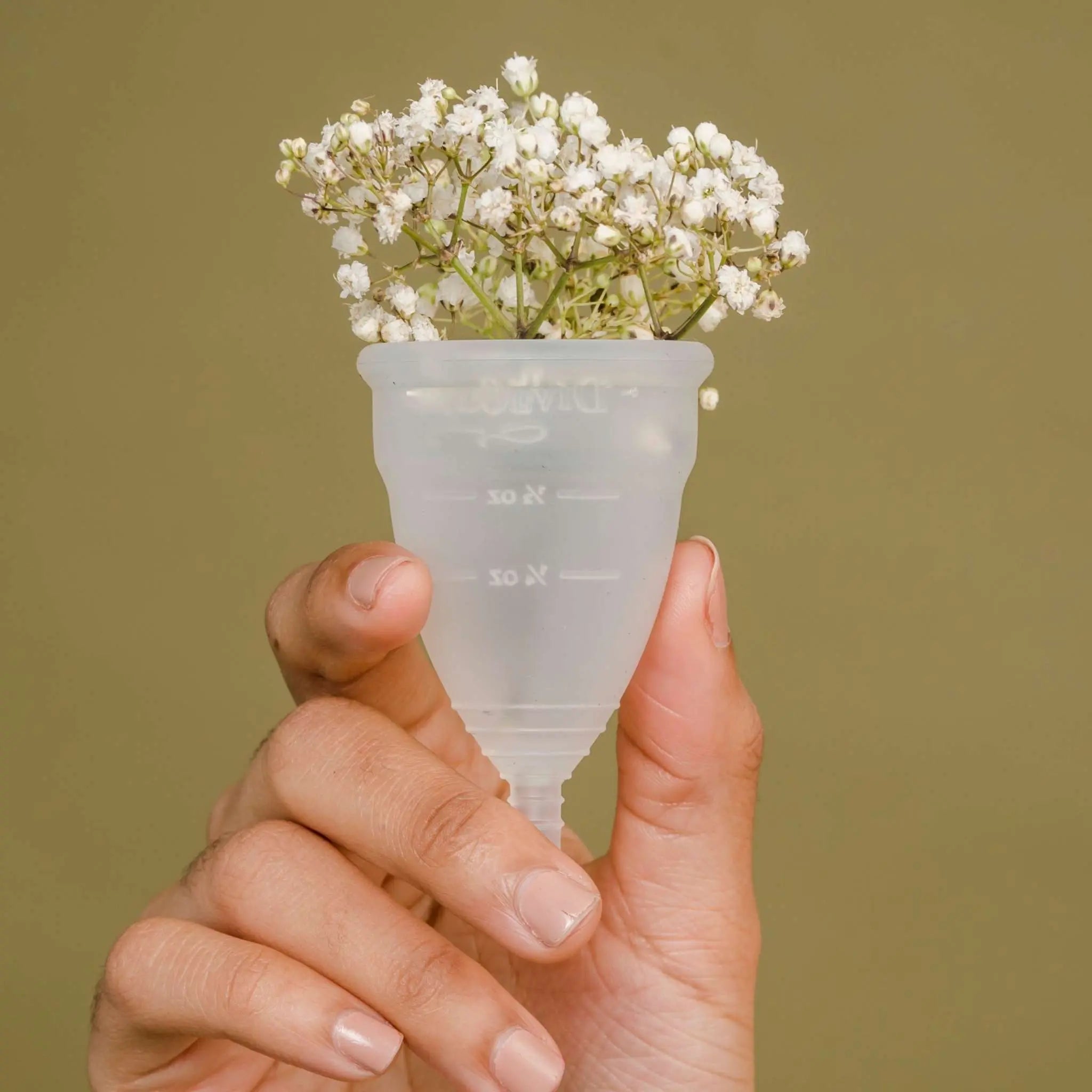The best eco-friendly birth-control and period products

Managing birth-control and your period is, at best, a minor inconvenience. You might not have much choice about what products you use, but if you do, it can still be very overwhelming. In Australia, there are at least twelve birth control options and five types of period products – and that’s not even considering the different brands. For this reason, many people just choose from the most popular options; tampons or pads for periods, and the contraceptive pill or male condoms for birth-control. All of these, however, are very wasteful. So, if you’re in a position to be a bit picky, one way to narrow down the options is to consider sustainability. In this blog, we’ll share some of the best eco-friendly period and birth-control products that will keep both you and our planet safe and healthy.
Period products
Menstrual cup
Possibly the most well-known reusable period product, menstrual cups are small, bell-shaped silicone cups that are inserted into the vagina to collect blood during a period. Some are disposable, but the ones we’re talking about today are reusable. Simply wash them with soap and water after each use and pop it in again. Depending on your flow, they can be worn for up to twelve hours before needing to be removed.
They can take some time to get used to, and can be a little messy if not inserted properly, but when used correctly they’re often considered to be more comfortable and less messy than pads or tampons. Keep in mind, though, that they’re more likely to leak if you have a very heavy flow or often get clots in your menstrual blood.
Reusable pad
If you like the good old pad but want something more sustainable, a reusable pad might be the best option for you. As their name suggests, these are reusable alternatives to disposable pads. Often made with organic cotton they have an absorbent core, a waterproof backing and snap fasteners to replace the sticky wings. They can generally hold as much blood as standard pads and, when they need replacing, simply rinse them out in cold water and wash on a cool setting. They’re just as hygienic as normal pads and can be even better if they’re made using naturally anti-bacterial and anti-fungal fabric. When looked after properly they can usually last for two years.
Period underwear
Period underwear is pretty much like a standard pair of underwear with some extra padding to absorb your period blood. Most are just as absorbent as pads – but without the discomfort that comes when they bunch up or move around (we all know how unpleasant that feels)! Depending on your flow you can leave them on for up-to twelve hours. When you need to change them, simply replace them with another pair and pop them in your washing machine on a delicate cycle. Avoid fabric softeners and use mild, unscented detergents. If looked after properly, ours can last up to five years.
Birth-control
IUD
There are two types of IUDs (intrauterine devices) that are both great, long-lasting birth control options with very little waste.
The copper IUD is a small, t-shaped, copper and plastic device that constantly releases a small amount of copper into the uterus and fallopian tubes to make them inhospitable to sperm. They can last up to 10 years before needing to be replaced.
The hormonal IUD is a similar, plastic device that slowly releases progestin into the uterus. This thickens the mucus in the cervix to stop sperm from getting through and thins the lining of the uterus. They can last up to 5 years, often reduce periods and can even stop periods completely.
Both are more than 99% effective at preventing pregnancy and can be removed by a doctor or nurse earlier if you choose to.
Implant
The contraceptive implant is another form of long-term contraception, but instead of being inserted into your uterus, it’s inserted under the skin on the inside of the arm. It slowly releases progestogen into the blood stream which prevents ovulation and thickens the mucus in the cervix. It’s more than 99% effective, last for three years and can be removed earlier than that if requested. It can also make your periods lighter and less painful.
Tubal ligation
If you’re looking for a more permanent solution, tubal ligation is easily the most sustainable contraceptive option. It requires one minimally invasive surgery and should last a lifetime. It involves a keyhole surgery in which the surgeon places clips on the fallopian tubes, or removes the fallopian tubes entirely, to stop the egg from travelling into the uterus. Periods will continue as normal and pregnancy is still possible through IVF or, if the fallopian tubes have not been removed, tubal ligation can sometimes be reversed.
Something is better than nothing
If none of these options work for you, there’s no need to feel guilty. Your health and safety is what’s most important, and if that means choosing a product that isn’t super sustainable, that’s okay! Besides, when it comes to birth control, any method will be much more sustainable than having an accidental child!
Managing periods and birth-control is, for many of us, a regular, unavoidable task. For this reason, it’s important to do so in such a way that is both healthy and environmentally responsible. If you’re in a position to choose a more sustainable solution, we hope one of these options will work for you. But remember, your health and safety should always be a priority!
0 comments




